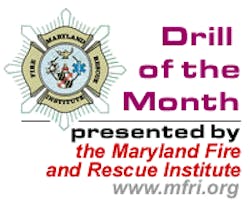Session Reference: 1
Topic: Setting Up for “Hunt for Home Hazards”
Time Required: 1.5 hours
Materials: matches, lighters, newspaper, extension cords, ash tray, kitchen appliances, stove, pots, pot holders, paper towels, hair dryer, curling iron, medicine containers, fire place, water heater, paints, gasoline container, pesticides or other items found in storage. Note: When this drill is conducted in the station many of the needed resources are already present; however, it you are taking this to a school for example, most of the materials will have to be transported.
References:
· Fire Safety for Young Children, Maryland Community Association for the Education of Young
Children
· Risk Watch, Grades 1-2, Lesson 2
· Sesame Street Fire Safety Book, Second Edition, p. 52
· Essentials of Fire Fighting, Fourth Edition, Chapter 19
Preparation: There is some set up required for this drill whether it is in the station or at another facility.
Motivation: Firefighters must complete a home inspection survey during the course of their training and many departments also conduct voluntary home inspections for their community. This drill assists firefighters, children and adults to be aware of potential fire hazards and to learn how to correct the problem.
Objective (SPO) 1-1
The student will demonstrate a basic knowledge of hazards which can be found in the home, identify the hazard and describe/demonstrate the elimination of the hazard.
Overview
• Identify the hazard areas
• Set up the hazards in each area
• Identify the hazard
• Explain/demonstration correcting/eliminating the hazard
Session 1 Hunt for Home Hazards
SPO 1-1 The student will demonstrate a basic knowledge of hazards which can be found in a home, identify the hazards and describe/demonstrate the elimination of the hazard.
EO 1-1 Identify potential home hazard areas
EO 1-2 Set up the hazards in each area
EO 1-3 Identify the hazard
EO 1-4 Correct the hazard
Instructional Guide
I. Identify the potential home hazard areas (EO 1-1)
A. Living room
B. Bed room
C. Kitchen
D. Bathroom
E. Basement
F. Garage
G. Attic
II. Set up Hazard Area (EO 1-2)
A. Living room
1. fire place
2. matches and lighters
3. extension cord
4. newspapers
5. ash tray
B. Bedroom
1. smoking materials
2. blind cords
C. Kitchen
1. various appliances
2. pots on stove
3. phone and TV
4. combustibles
a. towels
b. pot holders
D. Bathroom
1. appliances
2. ground fault receptacle
3. medicine
E. Basement
1. water heater
2. washer & dryer
3. combustibles
4. tools
5. paints
F. Garage
1. vehicle
2. gasoline
3. garden tools
4. pesticides
5. paints
G. Attic
1. combustibles
2. wiring
III. Identify the Hazard (EO 1-3)
Note: Students should have paper and pencil to note any problems while looking at the various rooms so hazards can be noted.
A. Living room
1. fireplace
a. combustibles too close to the heat source
b. wood should be dry hardwoods
c. screen or glass doors in place
2. matches and lighters left out, unsecured
3. extension cord under the carpet
4. newspapers too close to the fireplace
5. inadequate ash trays
B. Bedroom
1. smoking materials by the bed
2. cords of blinds loose
3. extension cord under rug
C. Kitchen
1. Appliance cords frayed
2. Too many items in one receptacle
3. Pot handles extending out from stove
4. Combustibles too close to the heat sources
5. Appliances not UL listed
D. Bathroom
1. Appliances not UL listed
2. Frayed cords
3. Lack of ground fault receptacles
E. Basement
1. water heater with too much stuff close by
2. dryer lint receptacle clogged
3. paint containers in the open
F. Garage
1. gasoline stored in unapproved container
2. pesticides in open containers
3. paints improperly stored
G. Attic
1. surface wiring in poor condition
2. overloaded storage area
IV. Correct the hazard (EO 1-4)
Note: Students can refer to their list and discuss or show how the hazard can be corrected.
A. Living Room
1. Make sure that fireplace is covered with screen or glass doors
2. Fireplace needs to be cleaned out
3. Proper disposal of ashes in covered metal container
4. Matches and lighters should be stored up and out of reach for children
5. extension cords are for temporary use and should not be placed under carpet or in walk ways
6. ash trays need to be deep, large and have a holder
7. newspapers and other combustibles should be kept away from heat sources
B. Bedroom
1. smoking materials should be kept elsewhere
2. do not smoke in bed
3. cords for the blinds should be out of reach of children
4. proper medicine storage
C. Kitchen
1. Frayed cords should be replaced
2. If an appliance has to be jiggled so it works, replace it
3. pot handles should be turned inward – prevent bumping into handle or child pulling pot over
4. Towels and pot holders should be kept away from stove burners
5. phone and TV are distracting – use a timer
D. Bathroom
1. make sure ground fault receptacles are in use
2. use plastic instead of glass containers
3. store medicines out of reach of children
4. appliances in good condition
E. Basement
1. water heater has open area around it – no combustibles too close
2. paints and flammable products are stored in metal cabinet
3. electrical tools are UL listed and in good condition
F. Garage
1. when working on vehicle in garage, have plenty of ventilation
2. gasoline stored in proper metal container
3. electrical garden tools are UL listed and have cords in good condition
4. refill mowers outside
5. pesticides are stored in original containers and clearly labeled
6. paints, etc. are stored in metal cabinet
G. Attic
1. Inspect wiring
2. eliminate unnecessary combustibles
Summary
Review
• Identify the potential hazard areas
• Setting up the hazards
• Identify the hazards
• Correct the hazard






